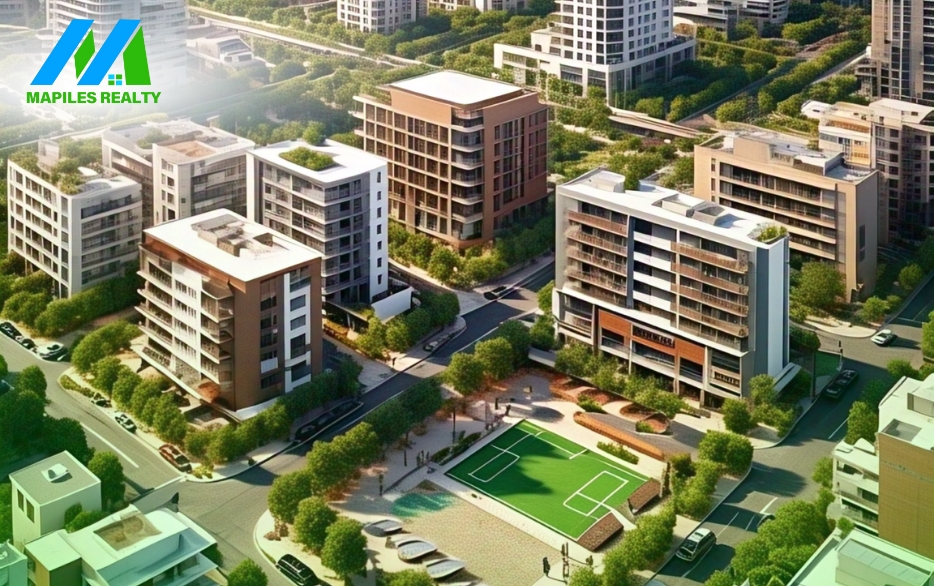The trend towards mixed-use developments is transforming the way we live, work, and play in urban areas. By combining residential, commercial, and recreational spaces, mixed-use communities are creating vibrant, dynamic, and sustainable environments that are redefining the concept of urban living.
What are Mixed-Use Communities?
Mixed-use communities are developments that integrate multiple uses, such as residential, commercial, retail, and recreational spaces, into a single project. This approach to development is designed to promote walkability, reduce traffic congestion, and create more sustainable and livable communities.
Benefits of Mixed-Use Communities
Mixed-use communities offer numerous benefits, including:
- Increased walkability: By locating residential, commercial, and recreational spaces in close proximity, mixed-use communities reduce the need for lengthy commutes and promote walking, cycling, and other forms of sustainable transportation.
- Improved quality of life: Mixed-use communities provide residents with access to a range of amenities, including shops, restaurants, parks, and community facilities, which can enhance their overall quality of life.
- Economic benefits: Mixed-use communities can stimulate local economic growth by attracting businesses, creating jobs, and increasing property values.
Key Features of Mixed-Use Communities
Mixed-use communities typically feature a range of amenities and services, including:
- Residential units: Mixed-use communities often include a range of residential units, such as apartments, condominiums, and townhouses.
- Commercial spaces: Commercial spaces, such as office buildings, retail stores, and restaurants, are often integrated into mixed-use communities.
- Recreational spaces: Recreational spaces, such as parks, community centers, and fitness facilities, are also commonly found in mixed-use communities.
- Public transportation: Many mixed-use communities are designed to be transit-oriented, with easy access to public transportation systems.
Challenges and Opportunities
While mixed-use communities offer many benefits, they also present several challenges and opportunities, including:
- Zoning and land-use regulations: Zoning and land-use regulations can create barriers to the development of mixed-use communities.
- Financing and funding: Securing financing and funding for mixed-use projects can be complex and challenging.
- Community engagement and participation: Engaging with local communities and involving them in the planning and development process is essential for creating successful mixed-use communities.
Examples of Successful Mixed-Use Communities
There are many examples of successful mixed-use communities around the world, including:
- The Gulch in Nashville, Tennessee: The Gulch is a mixed-use community that combines residential, commercial, and recreational spaces in a vibrant and dynamic environment.
- The Pearl District in Portland, Oregon: The Pearl District is a mixed-use community that features a range of residential, commercial, and recreational spaces, including parks, shops, and restaurants.
- The Waterfront in Vancouver, British Columbia: The Waterfront is a mixed-use community that combines residential, commercial, and recreational spaces in a stunning waterfront location.
Conclusion
Mixed-use communities are redefining the way we live, work, and play in urban areas. By combining residential, commercial, and recreational spaces, mixed-use communities are creating vibrant, dynamic, and sustainable environments that offer numerous benefits for residents, businesses, and the environment.
Future Outlook
The demand for mixed-use communities is expected to continue growing in the coming years, driven by changing demographics, lifestyles, and preferences. As the trend towards mixed-use development continues to evolve, we can expect to see more innovative and sustainable communities that prioritize walkability, community engagement, and environmental sustainability.
Recommendations for Developers and Policy Makers
For developers and policy makers looking to create successful mixed-use communities, here are some recommendations:
- Engage with local communities: Engage with local communities and involve them in the planning and development process.
- Prioritize walkability and sustainability: Prioritize walkability and sustainability in the design and development of mixed-use communities.
- Provide a range of amenities and services: Provide a range of amenities and services, including residential, commercial, and recreational spaces, to create vibrant and dynamic communities.





